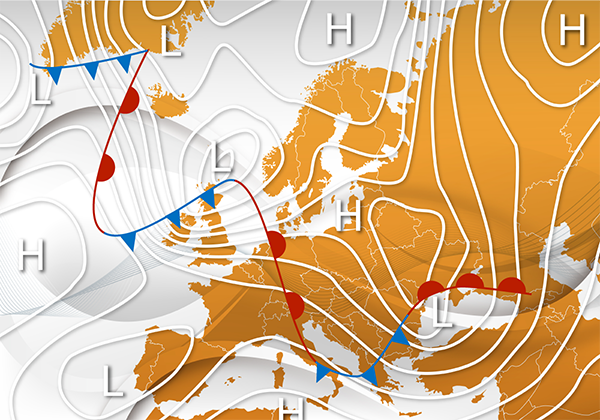The polar front
Bjerknes and Solberg (1922) proposed that a single warm & cold front, known as the “Polar Front”, lies more or less continuously around each hemisphere of the world, marking the boundary between cold air on its polar side and warm air on its tropical side. It is on this frontal boundary that families of low-pressure systems often develop.
In more recent decades, frontal theory has itself evolved in the recognition that every weather situation is unique, and that a certain degree of mixing (or stagnation) of air masses takes place throughout the atmosphere, which itself depends on the prevailing weather conditions. Furthermore, advances in the accurate simulation of the atmosphere by high-performance computers have become possible in recent decades; these are able to depict the full three-dimensional structure of the atmosphere in a way that would be impossible by using observations alone. In this way, discontinuities (or fronts) can be plotted objectively by computing algorithms (Hewson, 1997; Hewson, 1998).
